Every summer I have a bit of an invasion in my garden. Small, orange bugs that have only one thing in mind, attacking my highly precious Dregea sinensis – the wine covering the arch. If I keep up with the spraying against aphids I can keep the numbers down, but sooner or later the war against these particular bugs gets lost and they win. I use a combination of soil drenching and spraying with a liquid mix of herbs and fermented soy oil, an amazing product against all kind of aphids, including these ones, but they seem to get more resistant over the summer and into the autumn the population just explode.
My lovely Dregea looks just fine on a distance, still flowering it’s heart out and although some of the leaves are getting yellow and dropping off, new shoots and flowers are still being produced. I was afraid that I had pruned the Dregea too hard back in January, but look how big it is now, I could probably have cut the whole thing down and still had the whole arch covered by mid-summer. So, back to the bugs....This year I decided to find out what particular kind of aphids I actually have been harbouring, since they look nothing like greenflies and black flies and doesn’t seem to like any other plant in my garden apart from my Dregea.
A quick look at Google soon revealed that I had milkweed aphids or oleander aphids, in Latin; Aphis nerii Boyer de Fonscolombe ( that’s a bit of a tongue twister!) Aphis nerii is a common pest of several important ornamental plants in the families Apocynaceae and Asclepiadaceae. This bright yellow aphid with black appendages is commonly found in Florida feeding on oleander, Nerium oleander, milkweeds, such as butterfly weed, Asclepias tuberosa, and scarlet milkweed, Asclepias curassavica, and wax plant, Hoya carnosa. The Aphis nerii is found in tropical to warm temperate regions throughout the world. This species probably originated in the Mediterranean region, the origin of its principal host plant, oleander. So what on earth is it doing in my garden in London??
Well, you can say I probably invited them....by having the right plant. Dregea sinensis is a plant similar to milkweed, with sticky white sap and highly scented flowers. Aphis nerii is a bright orange-yellow insect with black legs, and stalks known as cornicles on the back of the abdomen. The aphids' bright colouring is a warning to predators. The aphids take up the cardenolides (cardiac glycosides) produced by the plants. When a predator disturbs the aphids, they exude the cardenolides in a waxy compound through the cornicles. Predators usually back away and clean the defensive compound from their mouthparts. You can see both their legs and their cornicles in this photo (click to enlarge if you have the stomach to it…). Aphis nerii has another amazing protection called phenotypic plasticity: the ability of an organism to change its phenotype, or body form, in response to changes in the environment. They get a bit edgy whenever they feel that something is approaching them too closely. When getting close to a colony, the whole colony can in perfect harmony, “kick” their tiny black legs up into the air much like a herd of miniscule “bucking broncos”!
Here is the result of intensive spraying on the lower branch with massive death as a result....and a new fresh colony on the upper branch just moved in. As I said, I am losing the battle. When the Aphis nerii finds its preferred hosts, the population explodes. All of the aphids are females; they reproduce by parthenogenesis (clones of the mother) and they bear live young (nymphs). If conditions become too crowded on a plant or the plant declines in health, some of the aphids develop wings and will colonize new plants – but that’s not likely to happen in my garden as I don’t have any other plants they will like.
Like other aphids the Aphis nerii secretes a viscous sugary substance known as honeydew. This secretion is greedily sought after by other insects, especially ants. Some ants live in close proximity to, and tend to aphids, although I have never seen any ants on my Dregea. As honeydew accumulates on the leaves, a black sooty mould often follows and is rather unsightly. This leave has a mix of dead aphids, honey dew and black mould, uhg!
The Aphis nerii tend to colonise the new tender shoots of the Dregea, especially those that have twined themselves into these thick clusters of stalks sticking right out from the arch. Brushing the aphids off is impossible, firstly because squashing them leads to completely orange coloured fingers which is hard to wash off. Secondly, the soft shoots are difficult to handle without breaking them, opening up a dripping tap of white sticky sap that itches with skin contact and leaving marks on clothes that doesn’t go away in the wash. Spraying and soil treatment is so far the only solution I have found, until the leaves drop off in the winter and the aphids die of starvation. Yeah! Aphis nerii can be attacked by parasitic wasps. The wasp lays its egg by inserting its ovipositor within the aphid nymph; the wasp larva then utilizes the aphid’s internal organs as its food source. After the parasite goes through metamorphosis and becomes a wasp inside the body of the aphid, it cuts a hole in the back of the aphid’s abdomen and emerges, leaving the aphid’s empty body, referred to as a “mummy”, as a hollowed-out dry shell with an open door in its back. Not sure if that’s happening in my garden, I might not have the correct wasps present, or the correct climate for the correct wasps, in any case, if the wasps are here they are not doing a particularly great job!
Generalist predators that survive eating the Aphis nerii suffer the effects of the cardenolides. Ladybirds develop deformed wings and spiders weave strange disrupted webs. Speaking of ladybirds, I do from time to time see ladybirds on the Dregea, but only the Harlequin ladybird, commonly known in North America as Asian lady beetle, or Japanese ladybug. It is described as "the most invasive ladybird on Earth" by scientists from the Centre for Ecology and Hydrology, Cambridge University and Anglia Ruskin University, who compiled the survey. The Harlequin ladybird (Harmonia axyridis) arrived in Britain in 2004 after being introduced into the USA in 1988 as a biological control for aphids and already rivals other model examples of invasive species without native enemies such as the grey squirrel. The Harlequin ladybird is more likely to bite than other species of ladybird, there are few documented cases of people having a severe allergic reaction to harlequin ladybirds. The stinging sensation is usually caused by small 'spurs' on the ladybird’s legs, which prick skin as they move and check whether or not the skin is a food source. I can’t remember last time I saw a native British ladybird, but I have plenty of these Harlequin ladybirds around my garden. I have even been bitten by them so I don’t pick them up anymore like I would do with their sweet cousins! I saw three Harlequin ladybirds on the Dregea today when taking my photos but none of them seemed particularly interested in munching any yellow aphids. Perhaps they know what’s in for them if they try to make a meal of them!
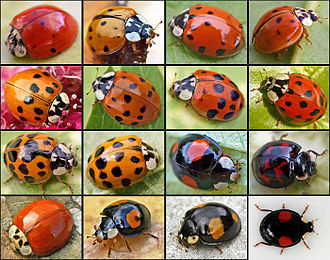 |
| Harlequin ladybirds come in all sorts of colourings, hence the name, picture courtesy of Wikipedia. |
But it is not all doom and gloom on my arch, despite all the yellow aphids. The plants are still alive and we are already in September so it won’t be more than 6 weeks or so until the plant starts to drop its leaves and the aphids will lose interest. In the mean time life goes on, I found a few seed pods today, which is a bit surprising since we have had such a cold summer, some years I have had none, some years plenty. Not that I need the seeds, I have 8 seedlings from last year growing on my nursery shelve, just in case I have a disaster with the mother plants, but last year I threw away 4 two year old plants that also were grown from seed ‘just in case’ – I simply haven’t got room for more of them and no one to give them to. I get enough seeds for hundreds of plants every year and taking cuttings are even easier so I could start a production line if I just had anyone willing to take them.
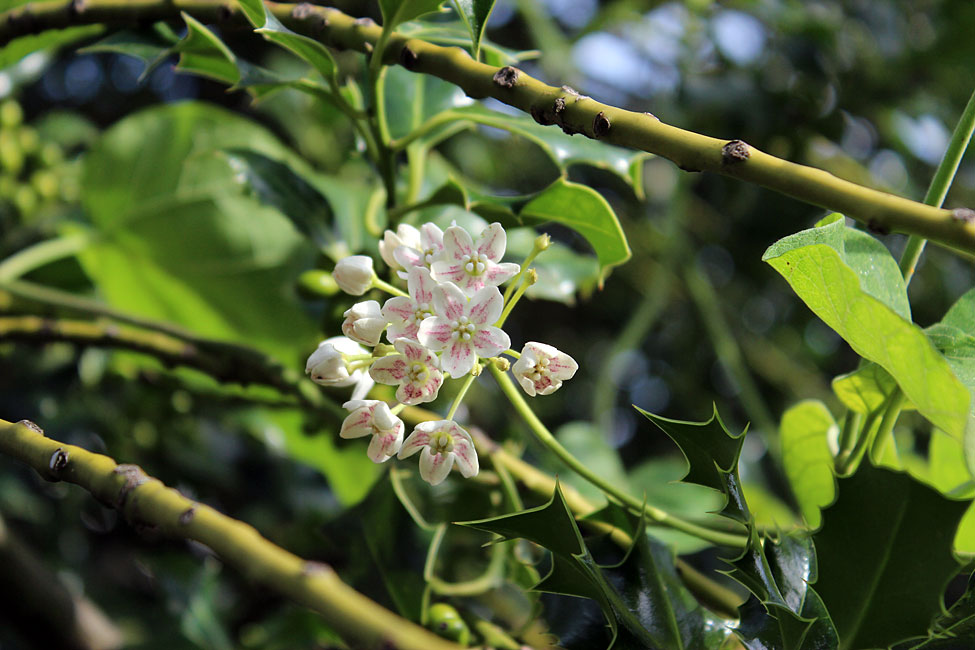 |
| The branches that have managed to hop over to the big holly tree are still flowering, giving my holly tree a nice flowering look on one side. |
And the flowers, well, that’s why I have the Dregea, despite the bugs and the pruning difficulties I have written about in previous posts – the flowers are beautiful, so lovely scented and so worth everything it throws at me. I am truly a fan of Dregea sinensis, so much so that I have made a movie about mine, you might have seen it in a previous post but I am reposting it to end this post on a bit more positive note than I started :-) Until next time, take care.

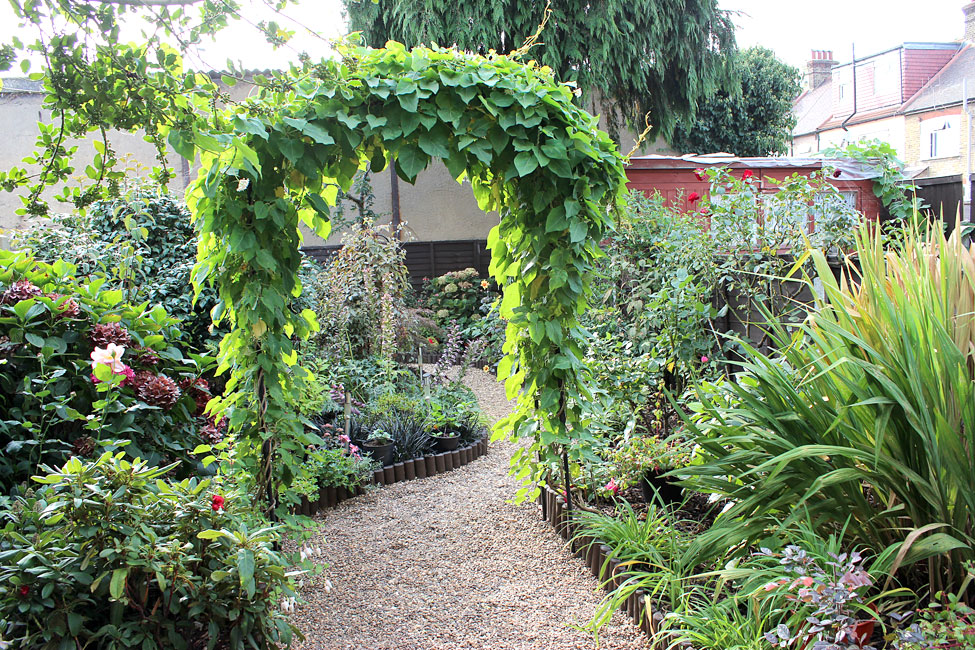
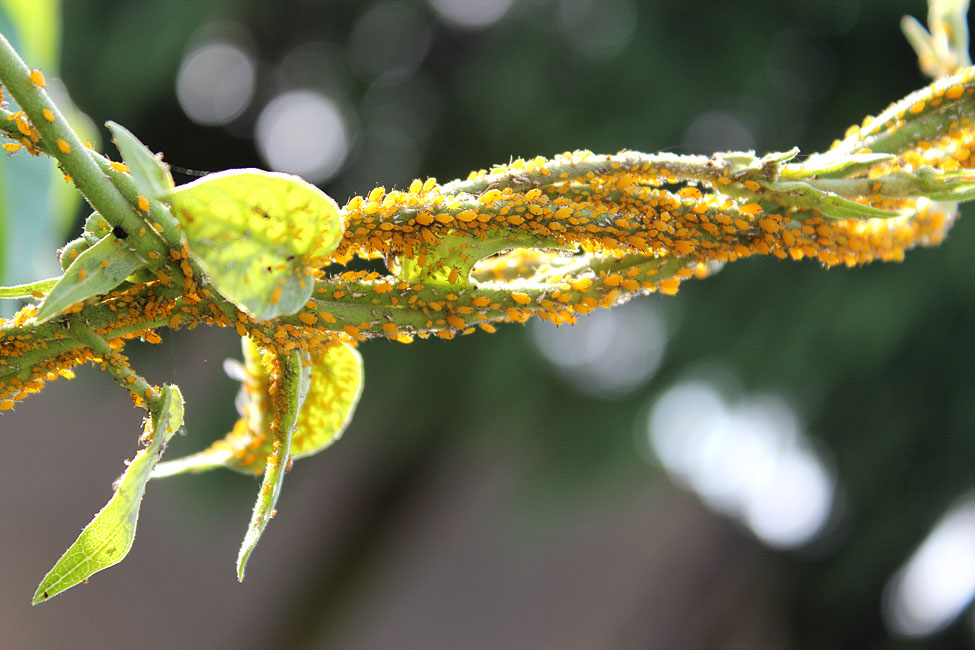

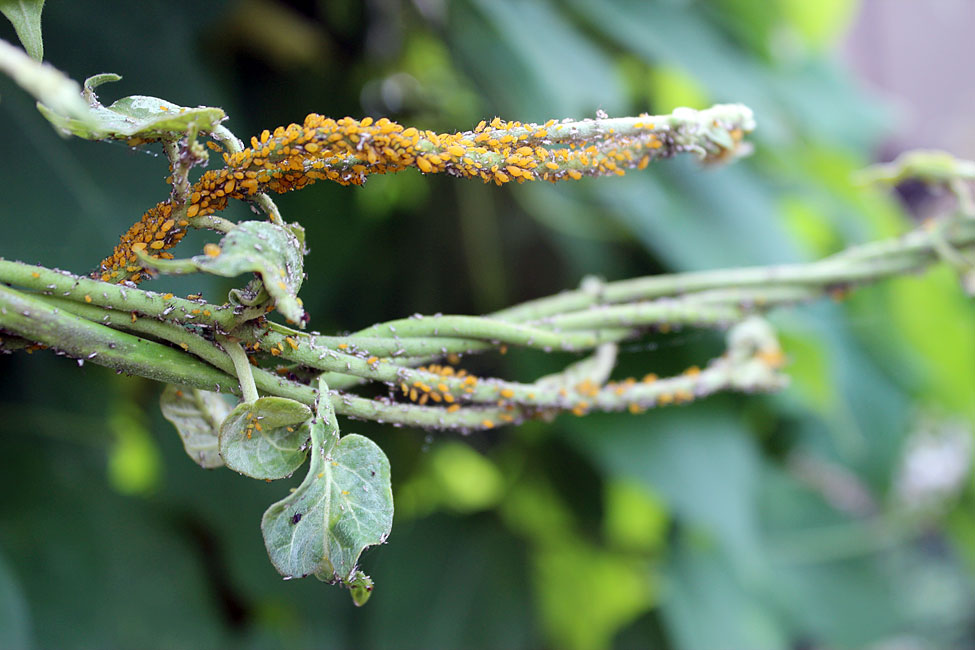
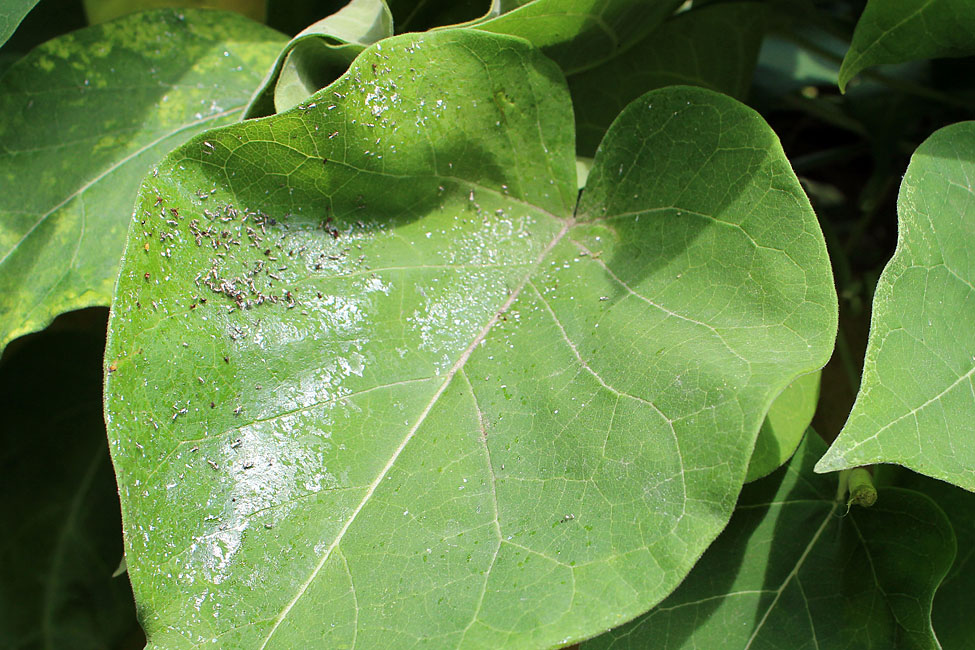
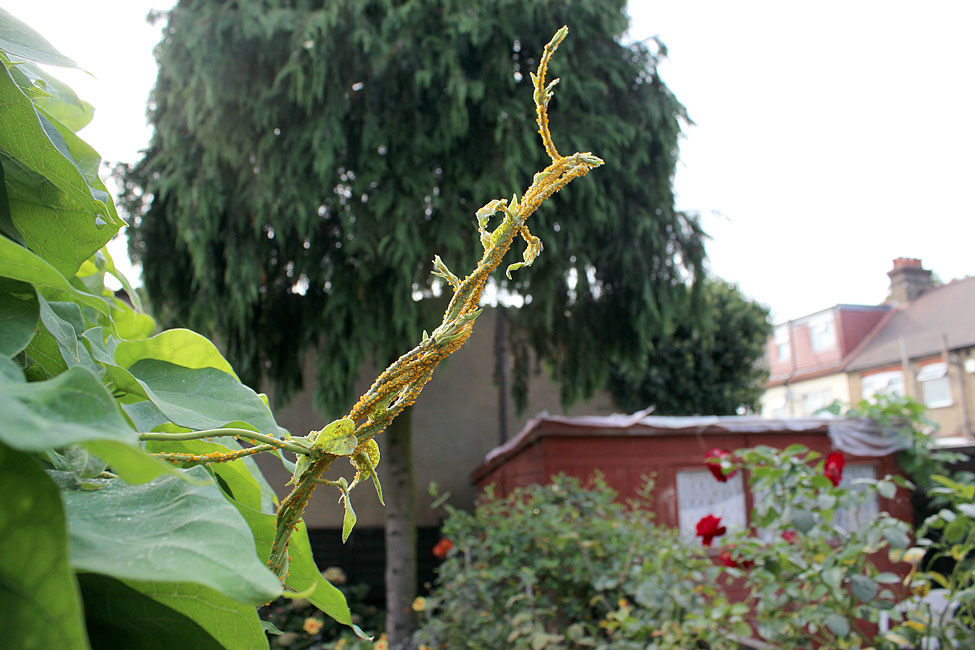
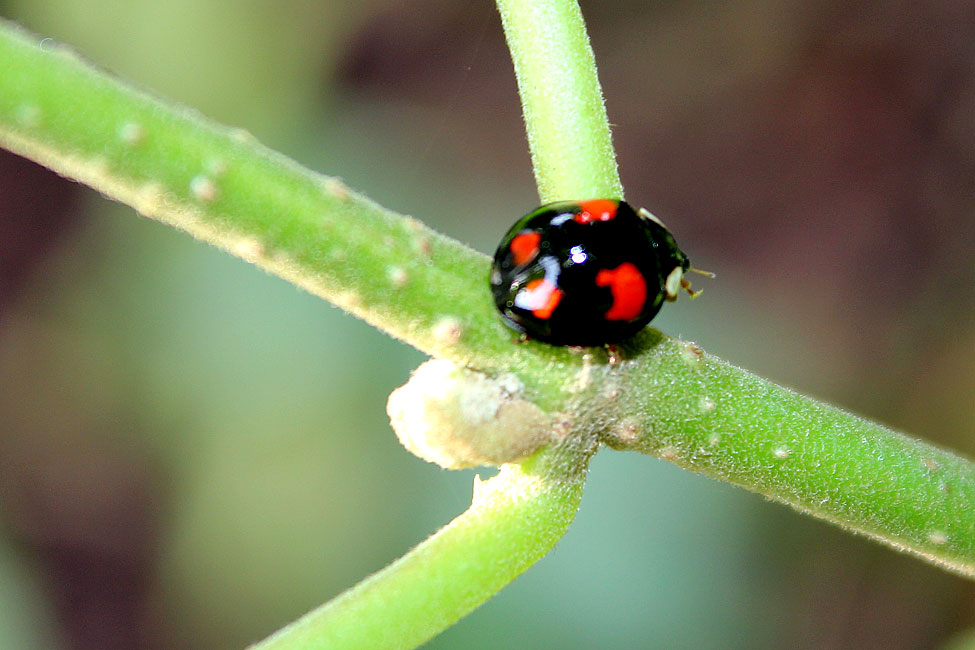
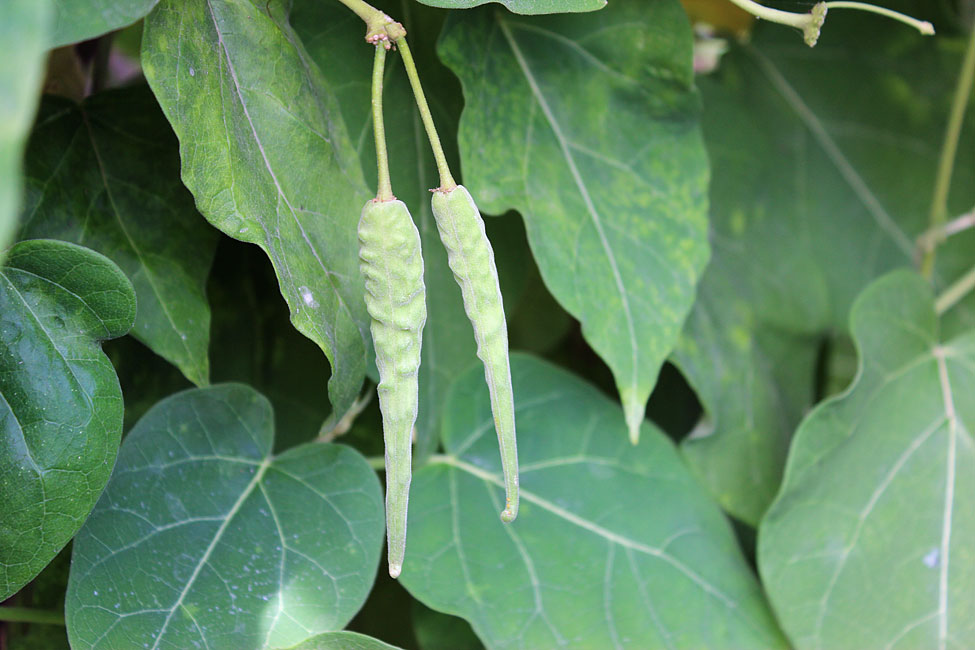
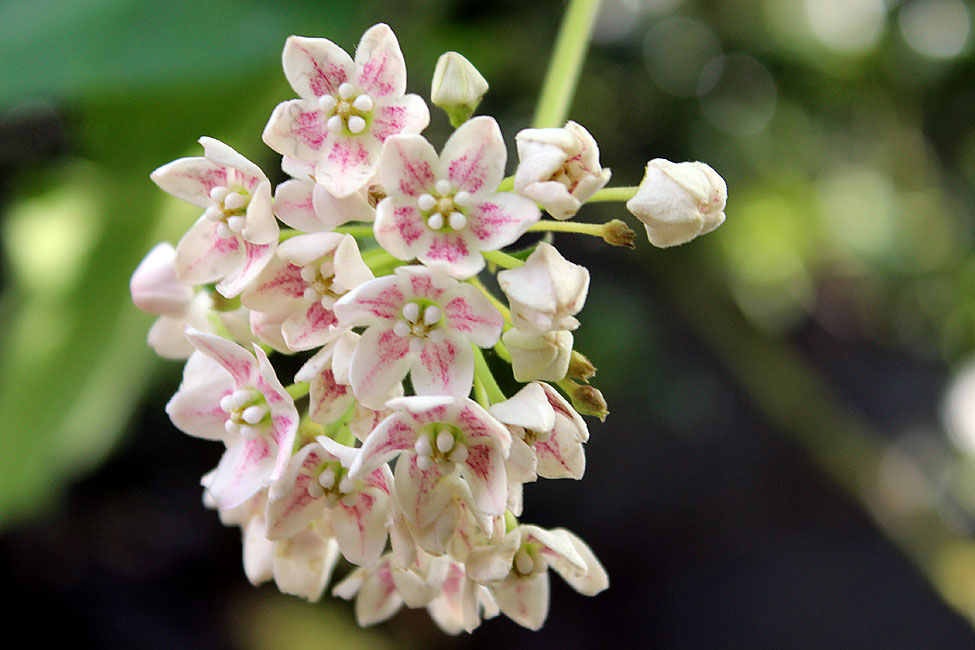
Such a lot of great information! Despite the problems caused by this horrid aphid, your Drega looks like it's doing quite well. As you say, it's only another 6 weeks and the bugs will lose interest. It's certainly worthwhile dealing with the aphids and the pruning challenges because the flowers are just spectacular.
ReplyDeleteThanks Bernie, yes the Dregea is worth the extra work, it is one of my favourite plants :-)
DeleteYou certainly know what you're doing! Your Dregea will surely be OK. It seems like aphids threaten to do harm, and they can cover a plant. But they often don't do as much damage as some other pests. It was interesting to see the line-up of all the different lady beetles--our garden friends. :)
ReplyDeleteThe aphids and their damage are more unsightly than anything else. As for the lady bird...I’m afraid the harlequin ladybirds are not considered a garden friend over here in Britain, they are considered yet another pest we have got from the Americans, threatening the native one - along with the grey squirrel...
DeleteNature is so complex! Such a shame for your poor plant. Sometimes it's satisfying to get rid of a plant just to remove the meal from the insect!
ReplyDeleteTrue, but in this case the plant is definitely staying, despite the pests!
DeleteWhat a rotten bunch of little suckers - and I do mean that literally!! Besides being such a nuisance of one of your most interesting plants, it was really disturbing how they could deform other insects and their habits. And thanks for the information about the ladybugs. Pretty things and the subject of many nursery songs but ladybugs that bite?? Ouch!
ReplyDeleteYeah, the harlequin ladybirds are not as sweet as their red cousins...It’s amazing how you invite the right pests for your environment. I would not have this type of aphids if I didn’t have a plant with this type of sticky sap, just as I would not have red lily beetles if it wasn’t for all my lilies. The right kind of plants one day and the right kind of bugs the following day...
DeleteI see them on my milkweed in large numbers. I am glad there are lots of ladybugs to help to control them. Sometimes they seem to cover every part.
ReplyDeleteThe last week the number of these aphids seem to have exploded! I think I definitely have lost the war for this year, just have to wait for colder weather now....
DeleteHi there! I am up in Aberdeenshire..in the cold NE of Scotland and have two plants of this wonderful climber in my "sitootery" - which is the Scottish word for "garden room"....LOL
ReplyDeleteIn my instance a lot more garden than room!!
Anyway these two plants have been with me for 2-3 years now and are a real joy - romping up a trellis against a sunny wall and they fill the place with their heady but delicate perfume and I just love 'em to bits! I got them off eBay and would really recommend them to anybody who can give them the TLC they need in colder climes!!
Happily I haven't needed to prune them yet - and also we don't appear to have these horrid aphids so far north of Hadrian's Wall...LOL
I did notice a seed-pod this month for the first time - but doubt if I will try to raise any new plants that way....I'm too long in the tooth apart from anything else...LOL
I came across your wonderful website by accident yesterday and just had to post a comment!
I will now go back and catch up with your other fascinating topics Helene - and will take this opportunity of wishing you all that you would wish for yourself - and your garden of course!
Yours aye, Alz2
How fun to see someone growing Dregeas in Scotland! If you grow them in the ground you will need to prune them eventually, if you want them to continue to grow on the trellis - they will be huge! But if you grow them in pots it will restrict the growth. They do however respond very well to pruning, and might flower much more if you prune them hard. As for the aphids, I guess it's just a matter of time before you get them, it is not about the temperature, aphids just hibernate when it's cold, so if you have the right plant for it, you'll eventually get the right pest...sorry!
Delete